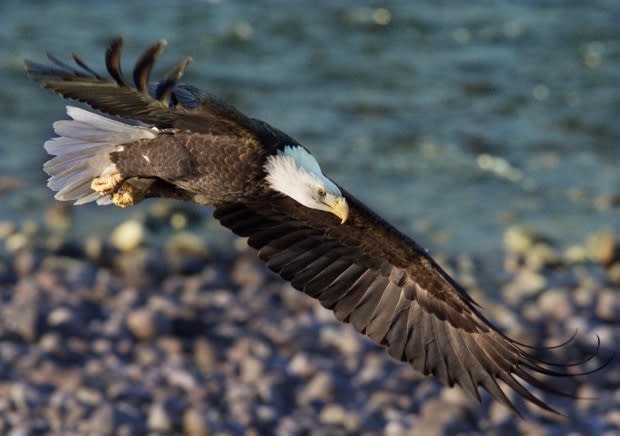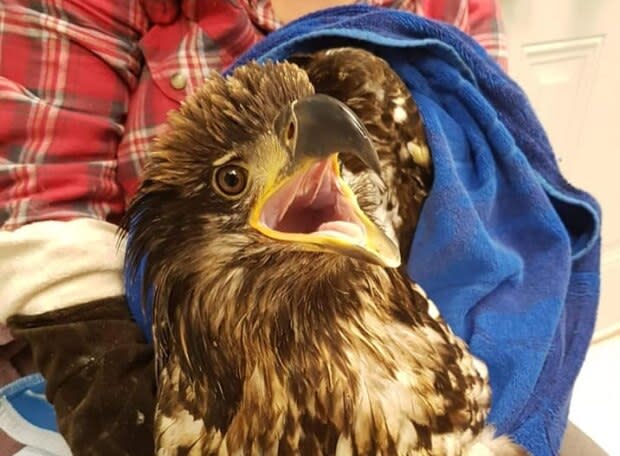Vancouver Island rescue society prepares for influx of bald eagles in need of help
A Vancouver Island bird rescue facility is preparing for another busy winter of treating injured and hungry bald eagles.
The Mountainaire Avian Rescue Society (or MARS) in Merville, British Columbia, took in over 50 of the raptors last year.
MARS staff estimates nearly 70 per cent of the eagles on the West Coast travel to the Salish Sea at the beginning of November, and as food sources become more scarce over the winter, the number of birds brought into the rescue centre rises.
Warren Warttig, society president, said the birds flock to the Salish Sea because it has some of the latest salmon runs of the year. They are then used to another feast in early spring, usually March, when the herring fishing begins.
Between spawning and herring season is when the number of bird patients at MARS swells. Warttig said often the birds in distress the society brings in are starving juvenile eagles who are fending for themselves for the first time without parental support.

"They make themselves look healthy, so no one will come after them and by the time you can actually pick them up they are severely emaciated," said Warttig on CBC's On The Island Friday. "To nurse them back can be real tough sometimes."
Warttig said often rescued birds have to be fed a "herring slurpie" by feeding tube when they first arrive. Then, once they have their strength back, it can be a challenge for MARS staff to help the birds regain the muscle mass they lost while ill.
This year though, it could be easier.
In past years, MARS had to ship some eagles to other rescue facilities, often in the Lower Mainland, where there are larger cages the birds can fly around in to build their muscle mass back up.

"Every time they travel, it stresses them out," said Warttig, who said the new flight cage at MARS should be ready by mid-January.
The new cage will be approximately 36 metres long and 12 metres wide. It will be used to rehabilitate not, just bald eagles, but also swans, great blue herons and other large birds that need to strengthen and condition their bodies before returning to the wild.
To hear the complete interview with Warren Warttig, tap the audio link below:

